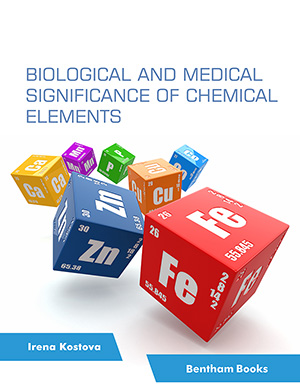Abstract
Background: Prostate cancer is one of the most prevalent cancers in men, leading to the second most common cause of death in men. Despite the availability of multiple treatments, the prevalence of prostate cancer remains high. Steroidal antagonists are associated with poor bioavailability and side effects, while non-steroidal antagonists show serious side effects, such as gynecomastia. Therefore, there is a need for a potential candidate for the treatment of prostate cancer with better bioavailability, good therapeutic effects, and minimal side effects.
Objective: This current research work focused on identifying a novel non-steroidal androgen receptor antagonist through computational tools, such as docking and in silico ADMET analysis.
Methods: Molecules were designed based on a literature survey, followed by molecular docking of all designed compounds and ADMET analysis of the hit compounds.
Results: A library of 600 non-steroidal derivatives (cis and trans) was designed, and molecular docking was performed in the active site of the androgen receptor (PDBID: 1Z95) using Auto- Dock Vina 1.5.6. Docking studies resulted in 15 potent hits, which were then subjected to ADME analysis using SwissADME. ADME analysis predicted three compounds (SK-79, SK-109, and SK-169) with the best ADME profile and better bioavailability. Toxicity studies using Protox-II were performed on the three best compounds (SK-79, SK-109, and SK-169), which predicted ideal toxicity for these lead compounds.
Conclusion: This research work will provide ample opportunities to explore medicinal and computational research areas. It will facilitate the development of novel androgen receptor antagonists in future experimental studies.
Keywords: Androgen receptors, non-steroidal derivatives, prostate cancer, docking studies, ADME, toxicity.
[http://dx.doi.org/10.14740/wjon1191] [PMID: 31068988]
[http://dx.doi.org/10.1272/jnms.JNMS.2018_85-37] [PMID: 30259894]
[PMID: 24336537]
[http://dx.doi.org/10.1016/j.disamonth.2014.02.003] [PMID: 24726082]
[http://dx.doi.org/10.1046/j.1525-1497.2000.90842.x] [PMID: 11089712]
[http://dx.doi.org/10.1007/BF00261959] [PMID: 2453093]
[http://dx.doi.org/10.1016/S0094-0143(21)01398-7] [PMID: 1825143]
[http://dx.doi.org/10.1038/s41391-020-0220-8] [PMID: 32123316]
[http://dx.doi.org/10.1080/17843286.2018.1543827] [PMID: 30477405]
[http://dx.doi.org/10.1007/s11095-006-9024-3] [PMID: 16841196]
[http://dx.doi.org/10.1007/s10637-021-01202-6] [PMID: 34843005]
[http://dx.doi.org/10.2165/00003088-199834050-00005] [PMID: 9592622]
[http://dx.doi.org/10.1016/S0968-0896(01)00421-7] [PMID: 11886817]
[http://dx.doi.org/10.2174/1389557516666160118112448] [PMID: 26776222]
[http://dx.doi.org/10.1016/j.phymed.2018.03.054] [PMID: 30097116]
[http://dx.doi.org/10.3390/molecules26010056] [PMID: 33374450]
[http://dx.doi.org/10.1016/j.ejmech.2019.01.054] [PMID: 30743097]
[http://dx.doi.org/10.1002/jhet.3487]
[http://dx.doi.org/10.1016/j.bmcl.2016.04.058] [PMID: 27156770]
[http://dx.doi.org/10.1016/j.bmcl.2015.03.001] [PMID: 25801936]
[http://dx.doi.org/10.1016/j.taap.2016.07.018] [PMID: 27473015]
[http://dx.doi.org/10.2174/1573409914666181019165821] [PMID: 30345926]
[http://dx.doi.org/10.1039/C5MB00499C] [PMID: 26442831]
[http://dx.doi.org/10.1074/jbc.M611711200] [PMID: 17311914]
[http://dx.doi.org/10.22159/ajpcr.2018.v11s2.28512]
[PMID: 19499576]
[http://dx.doi.org/10.1002/wcms.1298]
[http://dx.doi.org/10.1038/srep42717] [PMID: 28256516]
[http://dx.doi.org/10.1093/nar/gky318] [PMID: 29718510]
[http://dx.doi.org/10.3389/fchem.2018.00362] [PMID: 30271769];
(b) Pires, D. E.; Blundell, T. L.; Ascher, D. B. PKCSM: Predicting Small-Molecule Pharmacokinetic and Toxicity Properties Using Graph-Based Signatures. J. Med. Chem., 2015, 58(9), 4066-4072.
[http://dx.doi.org/10.1021/acs.jmedchem.5b00104] [PMID: 25860834]































